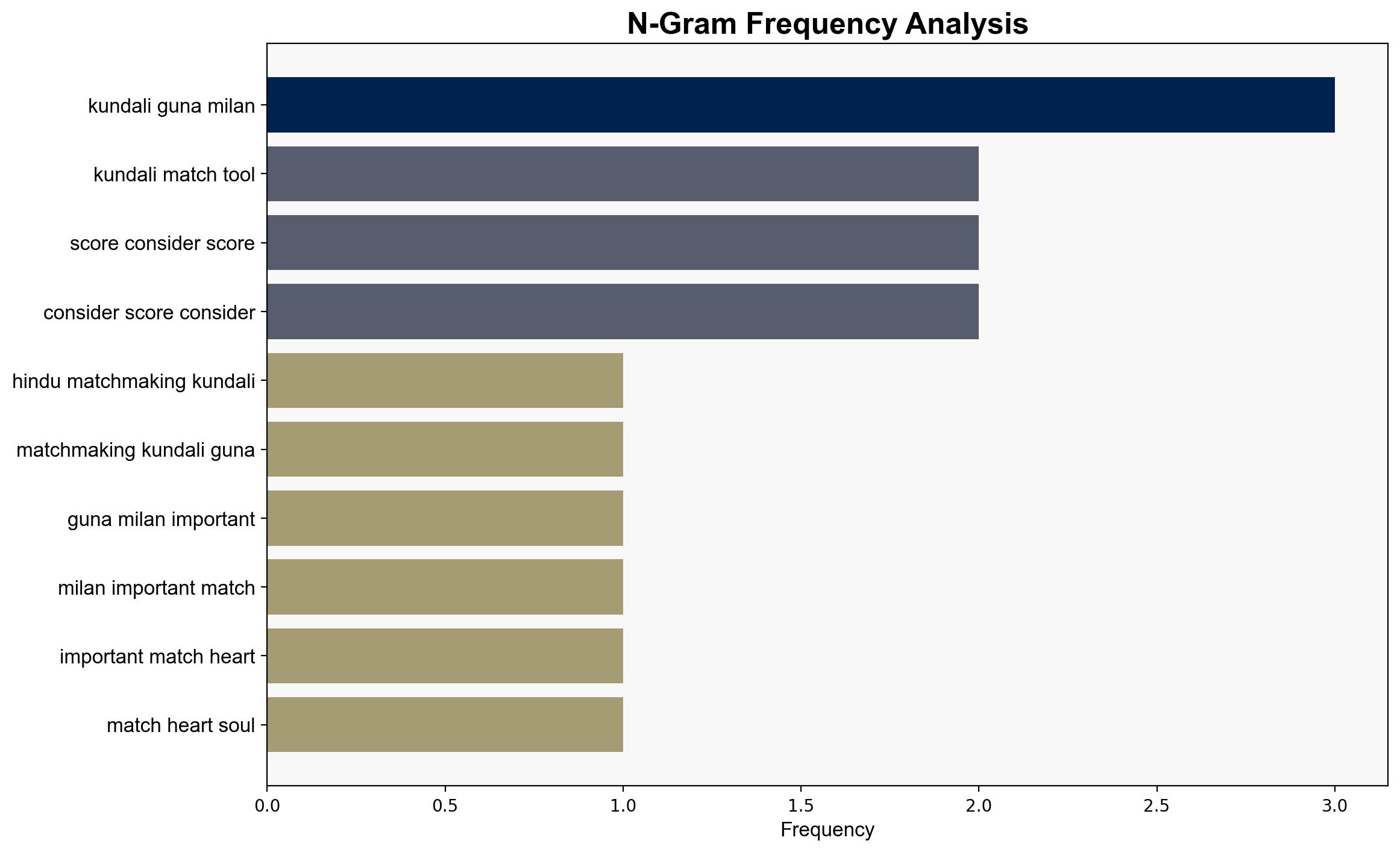What are the 36 gunas for Hindu marriage and a minimum of how many gunas should match – The Times of India
Published on: 2025-11-10
Intelligence Report: What are the 36 gunas for Hindu marriage and a minimum of how many gunas should match – The Times of India
1. BLUF (Bottom Line Up Front)
The analysis suggests that while the traditional guna matching system is deeply rooted in cultural practices, its effectiveness in predicting marital success is questionable. The hypothesis that modern couples should rely more on mutual understanding and communication rather than solely on astrological compatibility is better supported. Confidence Level: Moderate. Recommended action is to promote awareness of the limitations of guna matching and encourage complementary relationship counseling.
2. Competing Hypotheses
1. **Hypothesis A**: The traditional system of guna matching is a reliable predictor of marital success and should be adhered to strictly.
2. **Hypothesis B**: Guna matching provides limited insight into marital success, and modern couples should prioritize communication and understanding over astrological compatibility.
Structured Analytic Technique Applied: Cross-Impact Simulation.
– **Hypothesis A** is supported by the cultural and historical significance of guna matching, which has been a longstanding practice in Hindu marriages.
– **Hypothesis B** gains support from contemporary accounts and expert opinions suggesting that real-life success in marriage depends more on personal dynamics and mutual respect than on astrological scores.
3. Key Assumptions and Red Flags
– **Assumptions**: Hypothesis A assumes that cultural traditions are inherently effective predictors. Hypothesis B assumes that modern relationship dynamics differ significantly from traditional expectations.
– **Red Flags**: The source text suggests that even with perfect guna scores, marriages can fail, indicating potential over-reliance on tradition. The lack of empirical evidence supporting the efficacy of guna matching is a critical blind spot.
4. Implications and Strategic Risks
– **Cultural Implications**: A shift away from traditional practices could lead to cultural resistance or backlash among communities that value these traditions.
– **Psychological Risks**: Couples relying solely on guna matching may neglect essential relationship-building skills, leading to dissatisfaction.
– **Geopolitical Dimension**: As India modernizes, the balance between tradition and modernity could influence social policies and educational programs.
5. Recommendations and Outlook
- Promote educational campaigns highlighting the importance of communication and mutual respect in relationships.
- Encourage the integration of relationship counseling with traditional practices to provide a more holistic approach.
- Scenario Projections:
- Best Case: Harmonious integration of tradition and modern relationship practices leads to more successful marriages.
- Worst Case: Strict adherence to traditional practices without adaptation results in increased marital dissatisfaction.
- Most Likely: Gradual shift towards a balanced approach where tradition is respected but not solely relied upon.
6. Key Individuals and Entities
– Satya Narayan Katha: Mentioned as a source of truth and ritual understanding.
– KL Upadhyay: Referenced for revealing insights into the ritual categories of gunas.
7. Thematic Tags
cultural practices, relationship dynamics, modernity vs tradition, societal change





